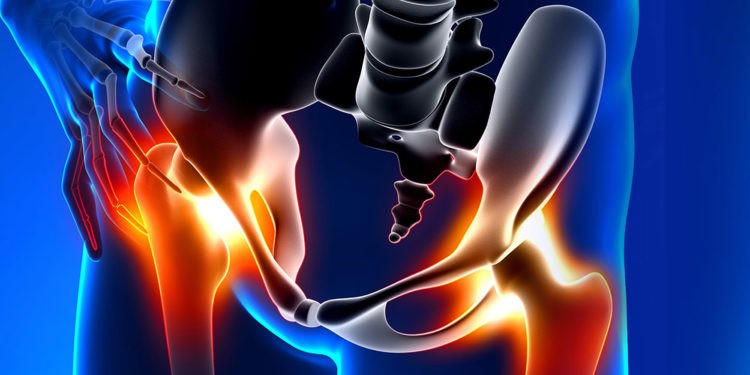Ask The Doctor

Hip Resurfacing vs Hip Replacement
Dr. Michael Hellman, Orthopaedic Surgeon with Rockhill Orthopaedic Specialists

QUESTION: What is Hip Resurfacing?
ANSWER: Hip Resurfacing is an alternative technology to Total Hip Replacement that is aimed at treating painful conditions of the hip in younger, active patients. Hip resurfacing is a technique that differs in the way the thigh bone is addressed. Instead of removing the ball at the top of the thigh bone (femur) the diseased cartilage and bone is shaved (like a tooth cap). A metal ball is then used to recap or resurface the femoral head.
The pelvic side is not conceptually different than a hip replacement because both implants have an artificial shell fixed to the socket. It is on the thigh bone (femoral) side that bone is preserved.
QUESTION: How does Hip Resurfacing compare to Conventional Hip Replacement?
ANSWER: In a conventional hip replacement the pain from a diseased hip is relieved by replacing the ball and the socket. The ball and neck at the top of the thigh bone (femur) is removed to allow a stemmed component to be placed in the marrow cavity of the thigh bone. The stemmed component has a ball applied to the top. The ball articulates with the socket (acetabulum) that is fitted into the pelvis.
QUESTION: Do you recommend hip resurfacing to younger patients?
ANSWER: While a hip replacement works well in many patients, it has shortcomings in patients who would like to be active and whose age is such that they would outlive the normal lifespan of a standard hip replacement (20-30 years). Hip replacement is becoming more common in younger patients that demand higher levels of physical activity after surgery. According to an American Academy of Hip and Knee Surgeons (AAHKS) 2015 survey, younger patients undergoing Total Hip Arthroplasty reported decreased overall satisfaction and commonly aspire to activities discouraged by their surgeons. Hip resurfacing is a potential option for these younger patients.
QUESTION: Is hip resurfacing a good option for all patients?
ANSWER: Modern Hip Resurfacing has been performed for almost 20 years outside the United States, with over 10 years of use in the United States after the Food and Drug Administration (FDA) approval in 2006. It is only approved for male patients. Typically, male patients under 65 that desire high impact activity such as running, singles tennis, basketball, soccer, etc. are good candidates for this procedure.
QUESTION: Do you feel that patients get a better outcome with hip resurfacing?
ANSWER: Studies have been performed where they have found that Activity Scores were significantly higher in patients with Hip Resurfacing when compared to patients with Total Hip Arthroplasty. Furthermore, a study in 2017 showed that more patients with a hip resurfacing achieved the highest activity score, which means that more people achieved high impact activities compared to patients that had a traditional total hip replacement. If a patient does not desire returning to a high impact activity, hip replacement and hip resurfacing have similar outcomes.
QUESTION: Can you elaborate on the benefits of hip resurfacing over a total hip replacement?
ANSWER: Hip Resurfacing restores traditional hip biomechanics better than a traditional hip replacement. Multiple articles have shown significantly superior restoration of leg-length in patients that underwent a hip resurfacing compared with a total hip arthoplasty. Furthermore, multiple articles have shown that hip resurfacing more appropriately restores femoral offset compared with a traditional total hip replacement.
QUESTION: Are there any other advantages of hip resurfacing over hip replacement?
ANSWER: There is preservation of bone on the thigh bone, potentially making a revision surgery easier. There is a reduced risk for dislocation due to the large size of the ball when compared to most hip replacements. There is also better stress distribution to the top of the femur by reducing the amount of stiff metal inside the marrow cavity.
QUESTION: So, with hip resurfacing patients can return to normal activities easier than getting a total hip replacement?
ANSWER: Hip Resurfacing potentially offers similar patient-reported outcomes with superior activity scores, thus suggesting an advantage in return to sports and other high-demand activities.
QUESTION: How long of a scar will you expect to have with a hip resurfacing?
ANSWER: Your surgeon will use an incision between six and ten inches in length. Some surgeons may use a slightly smaller incision.
QUESTION: What are my physical limitations after surgery?
ANSWER: Most surgeons will tell you that after the first six months, you can return to whatever physical activity you enjoyed before hip pain limited your mobility. For instance, unlike total hip replacement, you will be able to return to jogging or singles tennis during your first year following surgery. During your first six months, more conservative, low-impact activities like walking, swimming and bicycling are recommended for strengthening your muscles around your resurfaced joint.
For more information on Dr. Michael Hellman and Rockhill Orthopaedic Specialists call 816.246.4302 or visit RockhillOrtho.com






